Dedicated team ensures maritime forces, jet fighters ready for rapid deployment
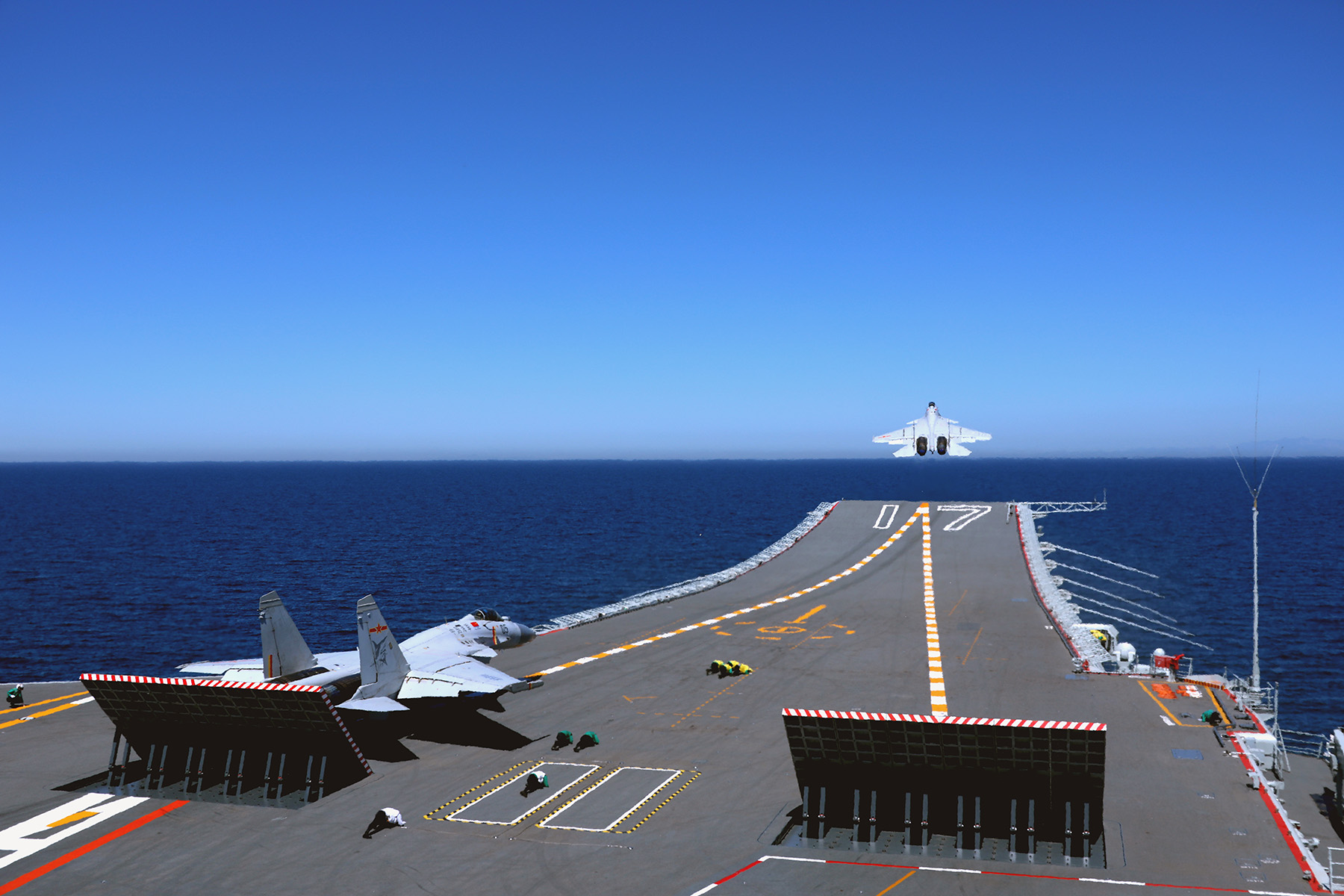
Command Master Chief Petty Officer Zhou Xiaoyong recalled that 26 years ago when he made up his mind to enlist in the People's Liberation Army, his father strongly opposed the decision.
"He didn't want me to become a soldier," said the 45-year-old native of Hubei province.
"I had just graduated from a local vocational school at that time and since I learned skills to be used at hydropower plants, I was told by the school that I would be given a job at the water conservancy bureau of a neighboring county. That was a decent job in my hometown.
"My father, an old-fashioned farmer, wanted me to stay in my hometown. He told me 'you cannot come back home if you leave for the military!'" Zhou told China Daily in Sanya, Hainan province.
READ MORE: Chinese Navy conducts training in Western Pacific
But Zhou's father failed to dissuade his son from pursuing a dream of joining the PLA. "I signed up and was soon assigned to the Navy. My father was very angry. And I was determined to become somebody in the military to show the old man that my choice was right," Zhou said.
Neither father nor son knew back in 1999 that the rebellious young man's decision would result in him becoming one of the PLA Navy's top specialists and a key figure in the carrier strike force.
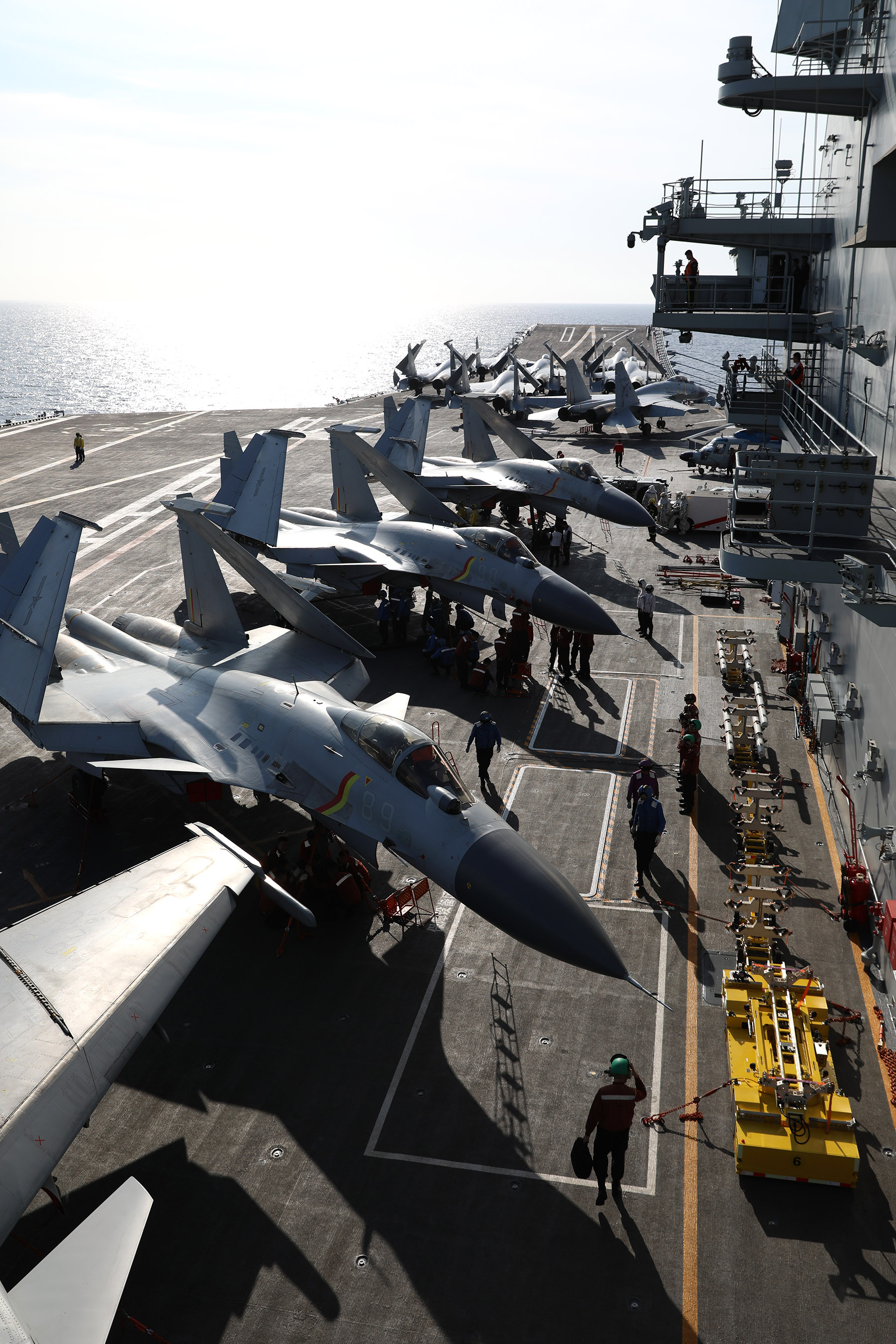
Zhou is now the commanding officer of a group of "green sweaters" on CNS Shandong. Everyone associated with an aircraft carrier's flight deck has a specific job, which is indicated by the color of their sweater, vest and helmet. Zhou's men are responsible for launching the J-15 fighter jets, the spearheads of Chinese carriers.
The Shandong — China's second aircraft carrier and the first wholly designed and built in the country — is the largest and most sophisticated naval vessel of any Asian navy. Commissioned in December 2019 for the South Sea Fleet, it displaces at least 50,000 metric tons of water and is home to dozens of J-15 fighters and helicopters during deployment.
The gigantic ship has just wrapped up a visit to Hong Kong, which took place earlier this month following a long-distance exercise with CNS Liaoning, China's first aircraft carrier, in the Western Pacific Ocean.
As one of the founding members of the Navy's carrier force, Zhou joined the pre-commissioning crew of the Liaoning in the late 2010s and witnessed its commissioning in September 2012.
After serving several years aboard the Liaoning, he was transferred to the Shandong as the new carrier's first launch officer. Zhou, who has by now facilitated thousands of J-15 takeoffs, helped to set up a team of well-trained "green sweaters".
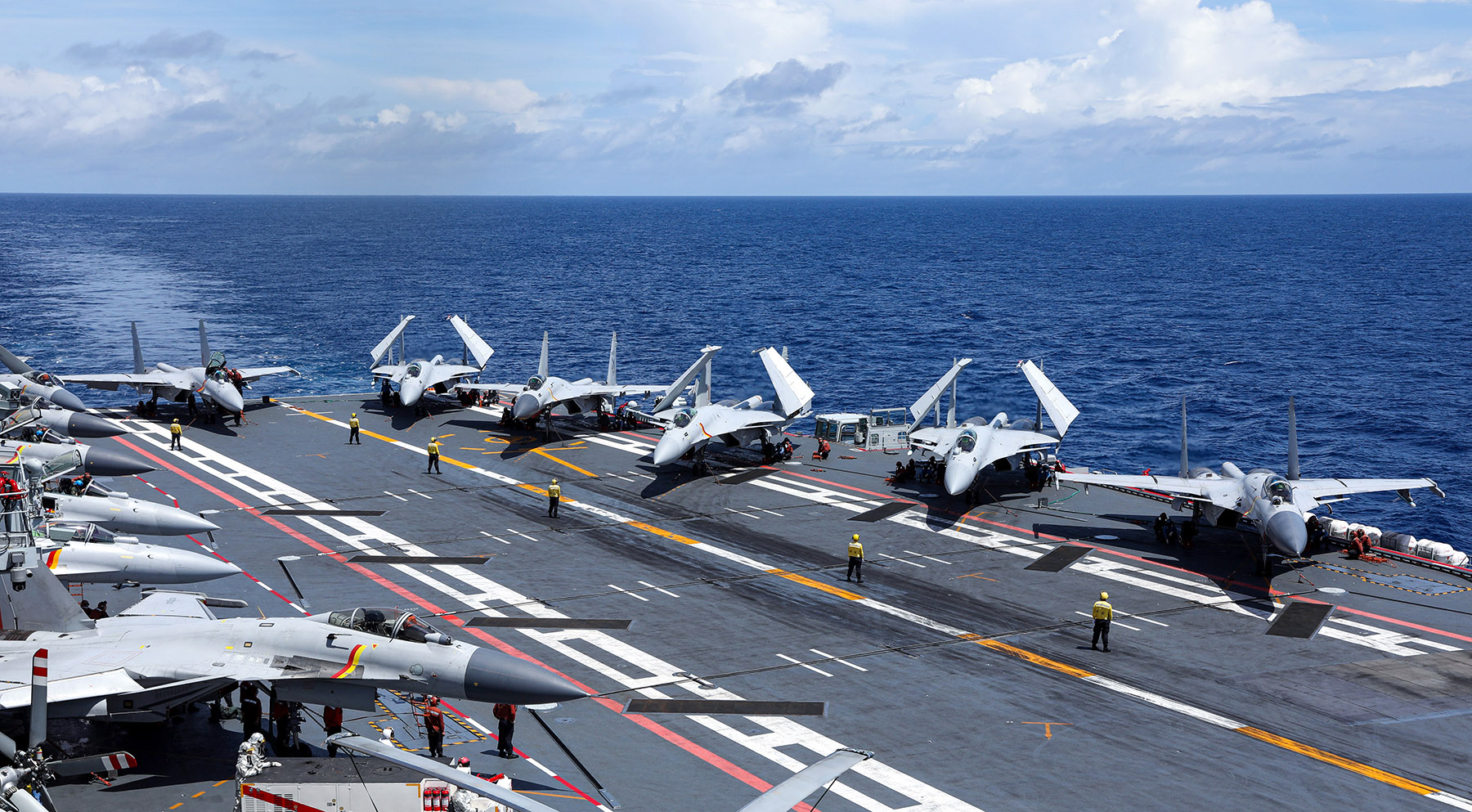
Speed is essential
Guiding and driving a large jet on a flight deck is never easy, Zhou said.
"The pilot mustn't taxi his plane in the same way he does on a conventional runway as the deck area is very limited and is often packed with jets and other equipment," he explained.
"Instead, he needs to take it as slowly as possible at some points, and he sometimes needs to make a rapid turn so he can move the jet to a designated site. That means the aviator must work closely with my people, and most importantly, follow their hand signals," Zhou explained.
Smooth cooperation is the goal of naval aviators and their comrades on the flight deck, he emphasized.
"Before each voyage, the fighter jet unit invites the launch crew to their air base to work with pilots on trial runs so the aviators can get familiar with every deck procedure before the launch of their jet," he said.
"During carrier exercises and combat deployment at sea, the J-15 aviators sit with us and other air operations crews to review and discuss procedures and make necessary preparations. After they return from a flight, some of them ask for our views and suggestions about their deck maneuvers," Zhou said.
His unit has also invited pilots to share knowledge about the J-15 fighter. "Their sharing has enabled us to better understand the jet and helped us improve our work," he said.
For their part, the launch crew must always execute each and every step accurately, which means repetitive training and flawless collaboration, the officer added.
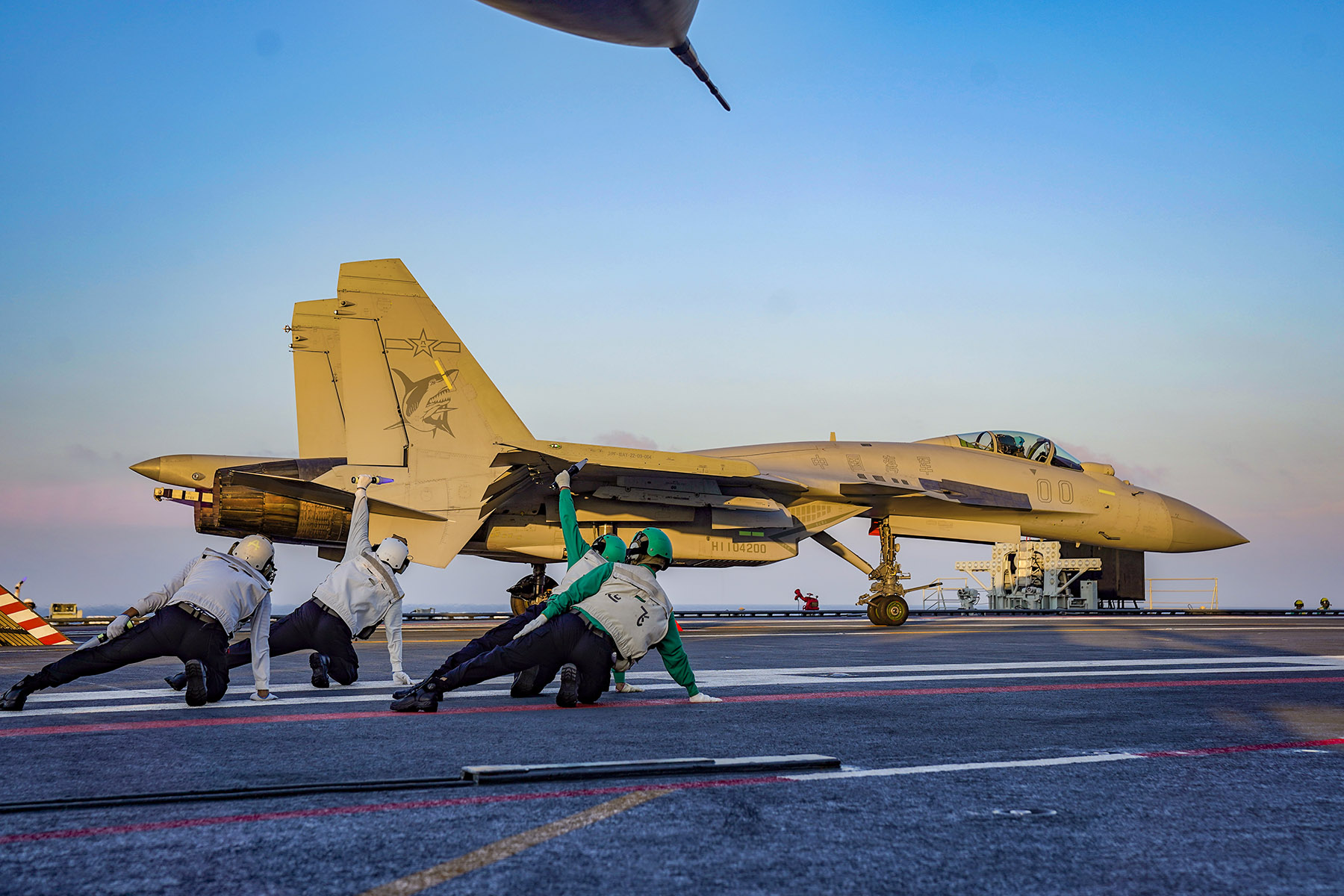
Zhou said his commanding officer, Lieutenant Commander Ren Chi, often tells the launch team members and recovery support sections they must keep honing their skills and be ready to respond to orders rapidly and effectively.
"All of us know that the more fighters we can launch when engaging with the enemy, the likelier it is we can win the battle," Zhou stressed.
He has led thousands of rehearsals of pre-launch maneuvers and spared no effort to improve the personnel's positioning, movement and hand signals.
"We can launch and recover far more fighter jets than before, and that means our carrier strike group now has greater air fighting strength," Zhou said. During the recent exercise with the Liaoning in the Western Pacific, the J-15 fighters were used almost every day, and his men were very busy, he said.
Lieutenant Junior Grade Gao Xiang is a member of Zhou's team and one of the "shooters" who are positioned beside a jet to signal the pilot when to take off.
"We practice each move tens of thousands of times until it becomes part of our muscle memory. Moreover, we gather experience, analyze data collected from training exercises and actual operations, and brainstorm and explore better procedures and maneuvers," Gao said.
"For instance, in the past, some of the deck operations were done one by one. After our research and trials, they are now conducted simultaneously, tremendously streamlining the launch process and reducing waiting time between takeoffs," Gao said, adding more fighters can be launched in the same period of time.
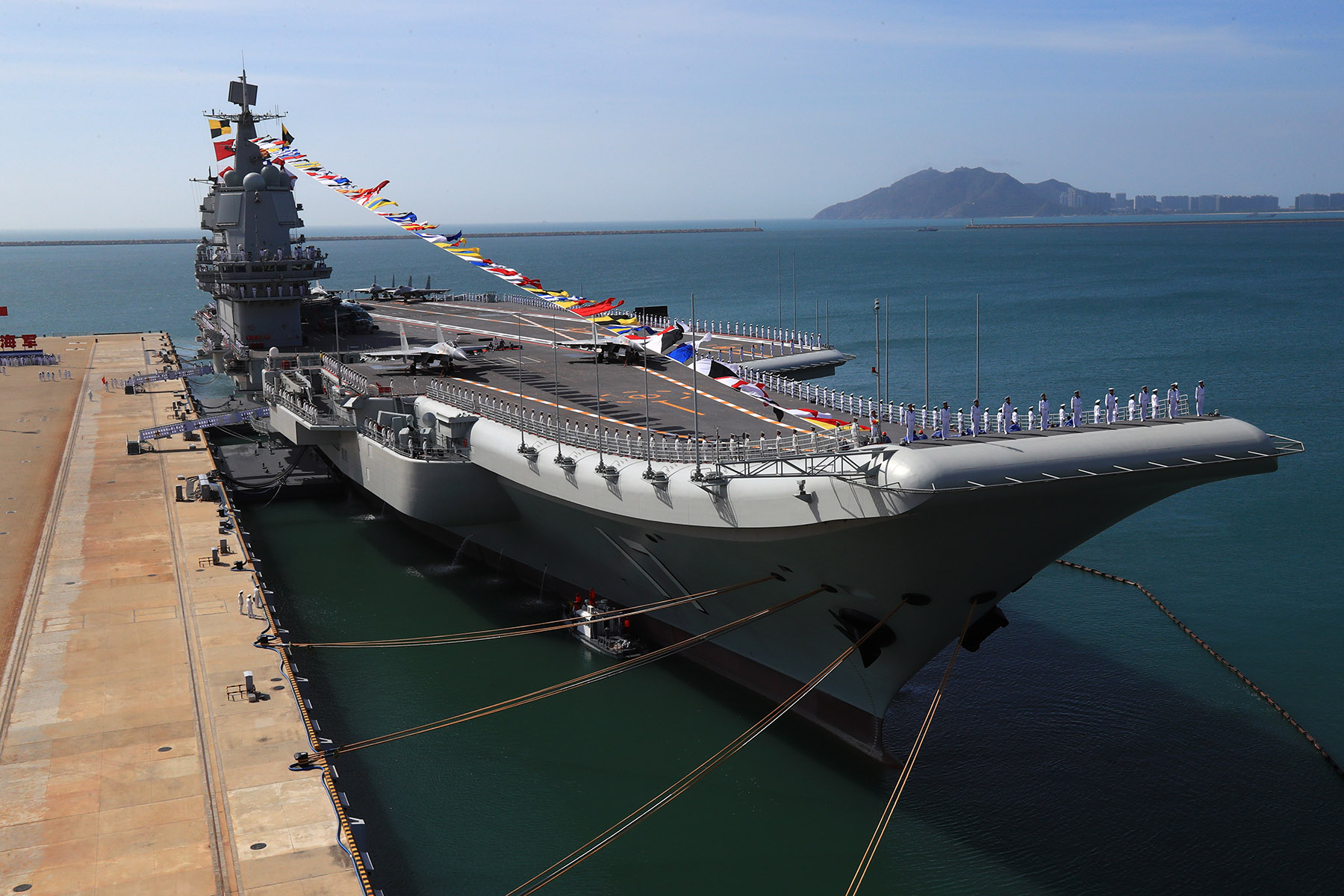
Thorax jolt
Zhou said wearing colorful sweaters, vests and special goggles, and standing on the carrier deck using hand signals to direct the fighter jets' movements may seem "pretty cool".
However, the reality is his team members have to endure a slew of challenges including piercing sounds, walls of scorching engine exhaust, and stiff sea winds that never stop. On top of this, they must pay full attention to their work, he said.
"Our duties have us within short distances from the jet's tail nozzles," Zhou said.
"Each time the pilot switches on the afterburners to increase the engines' thrust before his J-15 fighter roars into the sky, we are always punched by the deafening thunder of its powerful engines though we have earplugs and earmuffs.
"The noise is transmitted through our skull and bones. It makes your thorax jolt like boiling water and at the same time pokes your ears with the sound of air tearing apart."
Another important part of their job is to detect abnormal conditions and hazards and prevent dangerous situations.
Gao recalled one such incident with two other crew members.
"We had saluted the pilot and were about to signal him that he could take off. Right before we gave the 'go' sign, all of us saw one of the engine nozzles spitting out a fireball.
"We looked back toward the aircraft safety observer (standing behind the shooters), and he had already given a hand signal there was a hazard. We immediately stood up and repeated the sign to the pilot. We also signaled the wheel obstruction panels operator not to put down the panels."
If they failed to observe the fireball, and if the wheel obstruction panels had dropped back into their slots, the aviator would have faced a big safety hazard because even if he had noticed something was going wrong on the J-15 and tried to brake the plane, it would be highly likely to be late since the engines had been on maximum thrust and had begun to leap forward, according to the shooter. "To a certain extent, we helped to save that aircraft," Gao said, adding the plane was moved to an emergency area for examination.
In another case, Senior Chief Petty Officer Hao Zhenshan, an arresting gear technician, heard a very faint abnormal sound when he worked with other technicians to maintain arresting gear control equipment after they recovered a group of J-15s.
"The first idea in my mind was that something went wrong somewhere on the cable that we are responsible for. We began to comb the cable and found a tiny bulge that was caused by a broken steel wire. Then we used necessary measures to fix it to make sure it would not affect aircraft operations," Hao said.
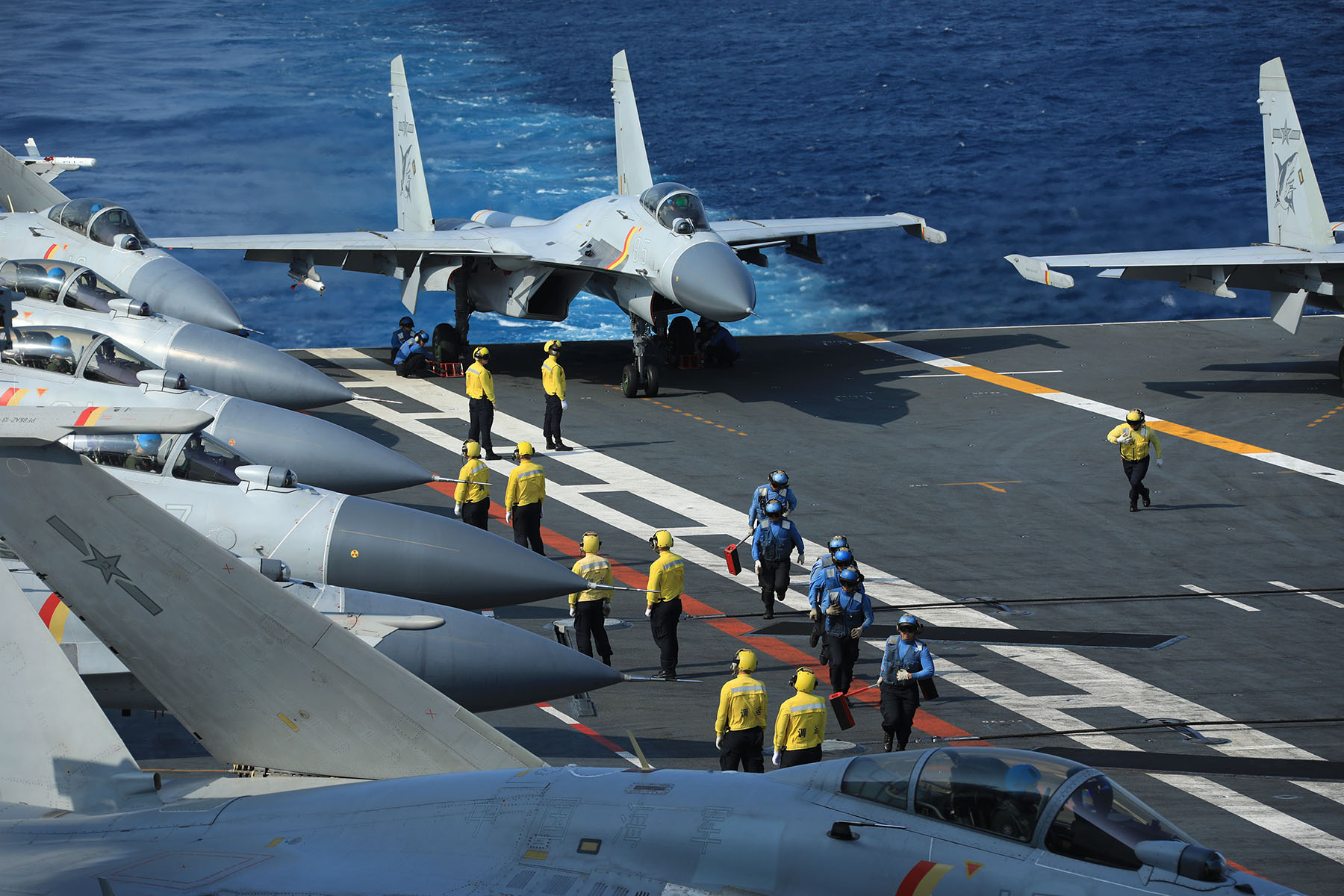
Strength to strength
Senior Captain Ma Chao, who oversees all air operations support sections on the Shandong, said the number of jet flights his men supported in 2024 was more than those of several previous years combined.
"That means a great deal of pressure and challenges. Rather than just completing our assigned tasks, we have managed to substantially shorten the time used to launch each J-15 jet, and have successfully saved a lot of time and money that would be needed in the past to repair or replace equipment," he said, attributing these accomplishments to his team's diligence and research work.
Chief Petty Officer Liu Ming, head of optical landing guidance, said that the training and drills of all of the launch and recovery support personnel have paid off.
"There are so many times that as the siren wailed, we immediately responded and rushed toward our posts.
"Within a matter of minutes we had launched several J-15s to engage with incoming hostile aircraft. You will be able to prevent a war if your adversaries know that you can defeat them," he stated.
Zhou's son is also strong-willed about his career choice.
"He applied for the PLA Naval University of Engineering last year and was admitted to the communication technology major. He will become a navy man like me," the officer said, noting that he now has support from his own father.
"I am proud to have been part of our nation's carrier force from its birth. It has grown up like a child does; entering the world and growing day by day — from short to tall, from weak to strong," he said.
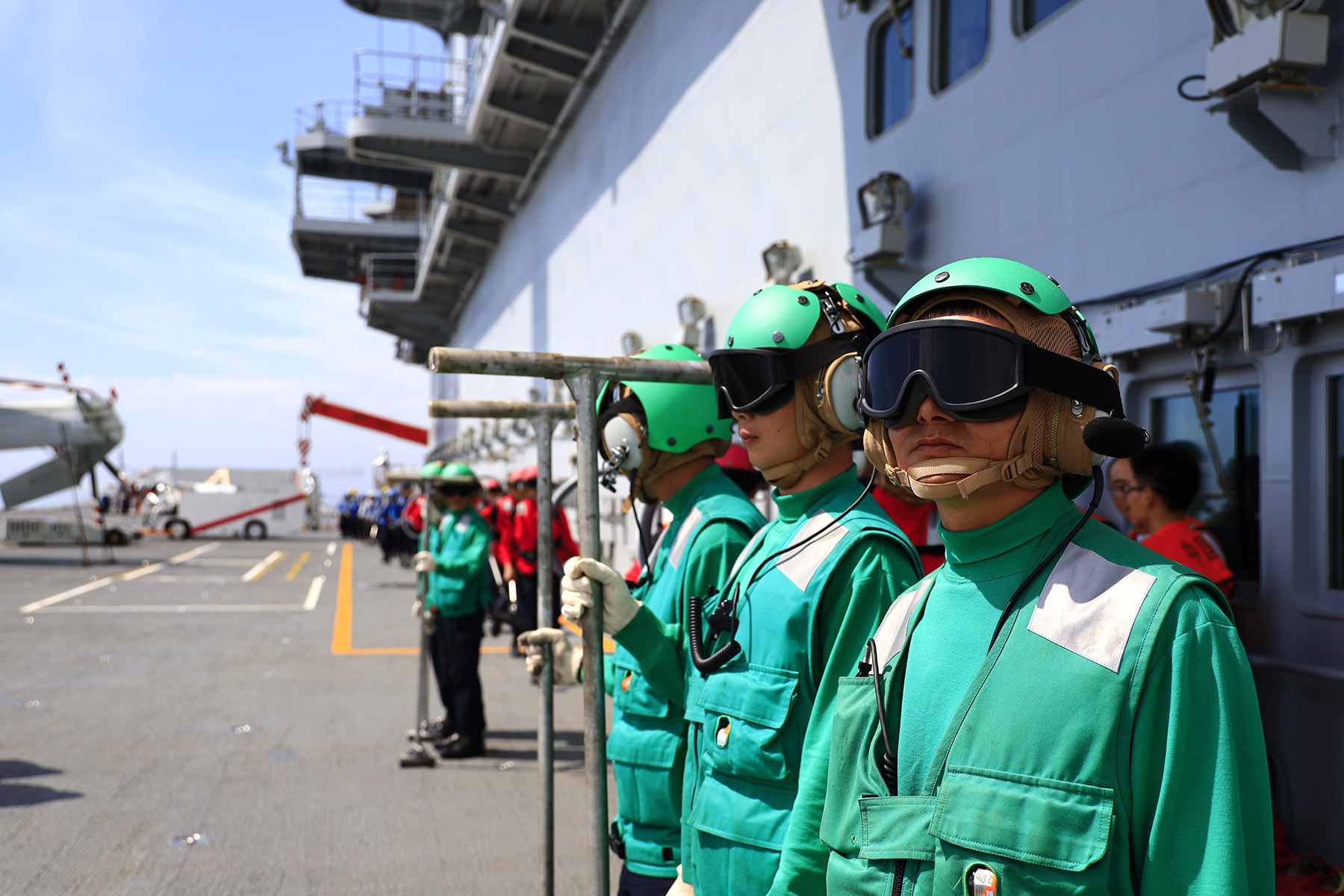
Kite and string
The naval aviators appreciate the significant role the support crews play in the carrier's air operations.
Lieutenant Commander Tan Zhiyong, a J-15 fighter pilot, said: "We must trust our flight deck colleagues completely rather than relying on our own intuition, because they are the authority on deck operations. In other words, we must entrust our lives to them."
Each time a new J-15 pilot is deployed on the carrier, it is natural for him to feel a little jittery because he is not familiar with deck maneuvers and is prone to errors. This is especially true when a new aviator is guided to move his plane to the launch point as even a minor mistake can lead to a disaster.
"We are honored and lucky to have a team of professional and experienced colleagues to work with us on the deck. They are experts in launch and recovery operations. For example, the launch officers understand that strong waves can cause trouble for us when we are about to take off. Thanks to their knowledge about the fluctuation of seas and the carrier itself, they know the best time to let us take off to make sure both the pilot and the plane are safe," Tan said.
ALSO READ: New stealth fighter jet to play 'crucial role' in nation's defense
Besides those on the deck, the naval aviator added, there are many sailors toiling under the deck to facilitate takeoff and landing, checking the jets' condition, preparing the jet blast deflector, monitoring birds, and doing other necessary work.
"After we land, we go to the control room to check our takeoff and landing data and videos they recorded in the hope of knowing what we have done well, and where we were not so good, and how to improve our capabilities," he said.
Another J-15 pilot, Lieutenant Commander Wang Yucai, described the relations between the aviators and their deck support crew as "kite and string".
"Without them, we will never be able to take off from and land on the carrier," he said. "In addition to their cooperation with us, their maintenance of the launch and recovery equipment is efficient and effective. There has never been a single case that our flight arrangement is disrupted by broken equipment."
Contact the writer at zhaolei@chinadaily.com.cn


